Tiger Tank I31 at Bovington
This surviving German Tiger Tank I Ausf. E Heavy Tank Panzerkampfwagen VI can be found at the Tank Museum, Bovington, Wool, Dorset in England. It is the only working Tiger I tank in the world
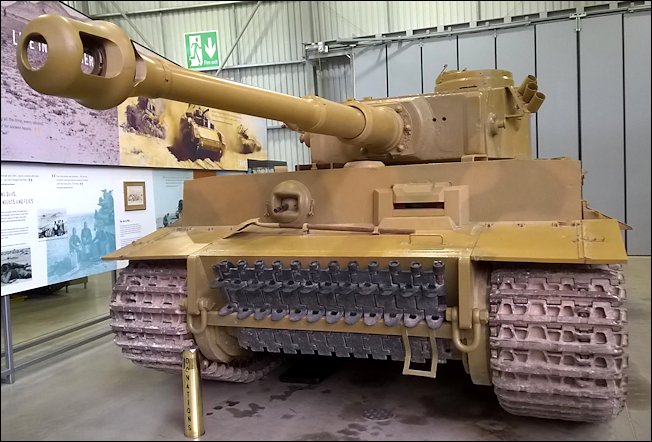
The German tank designers produce very good high quality technologically advanced fighting machines like the Panther and Tiger tank. The problem was this meant that they were difficult to produce in high volume numbers that the German high command wanted. The Americans could produce 4 to 6 Sherman tanks for every Tiger tank producing German factories.
Technologically advanced did not equate to being easy to fix. The German tank engineers did not rate the ability of tank crews and mechanical engineers being able to fix mechanical problems on the battlefield quickly and easily as something that should be a top priority when designing any new tank. Sherman and T 34 tanks were a lot easier to fix than the German Tiger tank.
The Tiger I tank was an economic disaster zone for the Germans. The 55 tonne steel monster looks very impressive but during World War II Germany was the country with the least steel. The Third Reich also had problems obtaining fuel. The official German army Tiger tank fuel consumption figures suggested that for each mile it drove on the battlefield it would need 5 gallons of fuel. It was a lot more thirsty than the Sherman tank which only required to gallons of fuel for each mile. When the Bovington Tiger Tank is used for its annual Tankfest display its fuel consumption is 8 gallons per mile mainly because it is used in low gear.
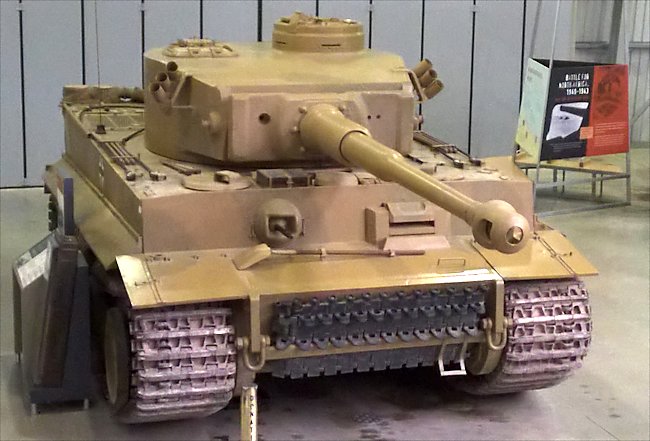
The Bovington Tiger 131 was captured in North Africa. On 21 April 1943 the 48th Royal Tank Regiment, which has just arrived in Tunisia from Britain and had virtually no combat experience, were going into action against German Afrika Corps for the first time. They were backed up by an infantry battalion as they attacked the hills.
Lieutenant Peter Gudgeon was commanding one of two troops of Churchill MkIII tanks that day. He recorded that, 'As we advanced towards our objectives we could see no sign of the enemy, but suddenly my fellow troop leader's tank erupted in an enormous explosion. Before I had a chance to locate the source of this shot my Churchill tank was hit by a shell that passed through the front armoured plate, right through the fighting compartment and into the engine setting it on fire. We bailed out under heavy German machine-gun fire and were lucky to escape with only minor injuries. The crew of the other Churchill tank were all killed immediately.'
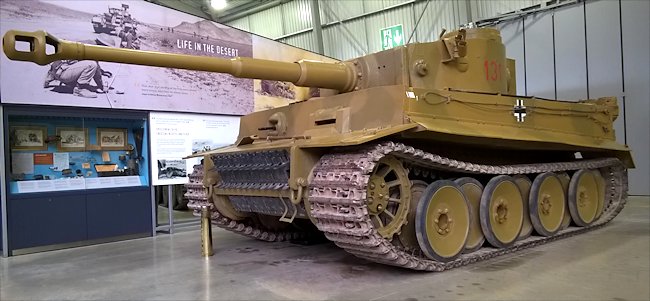
Both tanks had been knocked out by the and 88 mm shell fired by Tiger tank 131 which was later found abandoned in the hills of their objective. What happened to the crew of the Tiger tank is a mystery. Normally when a tank has to be abandoned because of mechanical problems it would be destroyed to save it falling into the hands of the enemy. This Tiger tank was found intact.
The 504th Heavy Panzer battalion's war diary simply states, ' Crew members of tank 131 abandoned tank in panic after two harmless hits from a Churchill.' The hits from the Churchill tank were anything but harmless. The tank was subject to several direct hits. The most damaging a 6 pounder shot, was the one that hit underneath the gun, hitting the gun mantlet and finally lodging itself in the turret ring. This caused the turret to jam into one position effectively making it unable to fight. This damage can still be seen on the tank today.
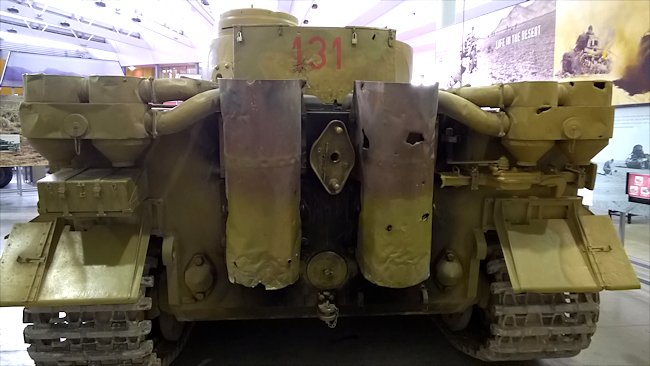
This shell also split the welding on the top of the tank and shattered the radio. It could also possibly injured the driver and the front hull machine-gunner. With injured crew and being unable to call for assistance it would be quite understandable to see why the crew panicked and failed to destroy the tank. They would have seen advancing British Churchill tanks and infantry coming towards them only 50 yards away and they were unable to fire back.
The British had been fighting Tiger tanks since January 1943. Three months later this was the first time they could get close up and examine this German beast of the battlefield. The tank was immediately sent to Egypt where it was examined by others including Winston Churchill and King George VI. It was then shipped to England for testing and evaluation.
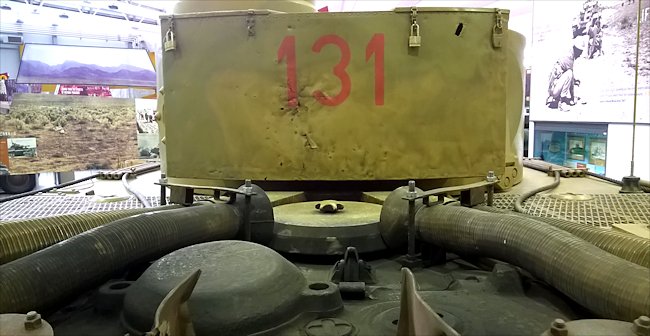
Many people do not realise that the composition of a German Heavy Tank Battalion was not made up solely of Tiger Tanks. Early on in the war they would comprise of tiger tanks supported by Panzer Mark III tanks. In 1942 for example the standard formation would be 20 Tiger Tanks and 16 Panzer III tanks. They would be split into two companies of four platoons of two Tigers and two Panzer IIIs each. The company commander would have an additional Tiger and Battalion command would have an additional two.
Bovington Tiger tank 131 is the only surviving working World War II original in the world. There are a few other Tiger tanks in museums but none of them have been restored in a working condition. One of the reasons why so few survived was because not many were made. It is believed that only 1,347 were produced which is a very small number compared to the 35,120 T34/76 tanks manufactured by the Russians.
WW2 tank books

